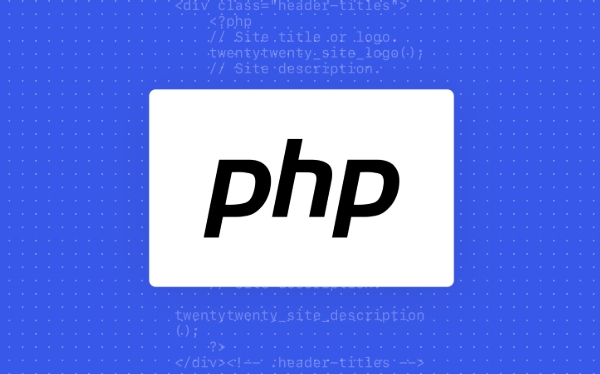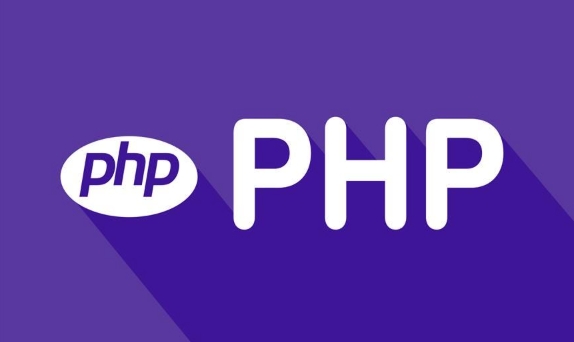 Backend Development
Backend Development
 PHP Tutorial
PHP Tutorial
 PHP Unveiled: A Journey from Core Syntax to Modern Web Applications
PHP Unveiled: A Journey from Core Syntax to Modern Web Applications
PHP Unveiled: A Journey from Core Syntax to Modern Web Applications
Jul 30, 2025 am 05:38 AMPHP remains relevant today because it has evolved from basic scripting to a modern, framework-driven language capable of building scalable web applications; 1. Core syntax includes variables, control structures, functions, arrays, and superglobals for handling requests; 2. Object-oriented PHP introduced classes, inheritance, interfaces, traits, and autoloading via Composer and PSR-4, enabling better code organization; 3. Frameworks like Laravel and Symfony provide routing, ORM, middleware, and CLI tools, drastically improving development speed and maintainability; 4. Modern use cases include RESTful APIs, headless CMS backends, real-time features with WebSockets, and integration with SPAs, along with strong testing and DevOps support through PHPUnit, Docker, and CI/CD pipelines; ultimately, PHP's adaptability, performance improvements in PHP 8 , and rich ecosystem ensure its continued role in contemporary web development.

PHP Unveiled: A Journey from Core Syntax to Modern Web Applications

If you've ever built a website or explored server-side programming, chances are you've encountered PHP. Despite its reputation for being "old school," PHP powers over 75% of websites using a server-side language—including giants like WordPress, Facebook (in its early days), and Wikipedia. But what exactly makes PHP still relevant today? Let’s walk through its evolution—from basic syntax to modern web development practices—and see how it’s more than just echo "Hello, World!";
1. The Basics: Core PHP Syntax You Need to Know
Before diving into frameworks or complex architectures, it’s essential to understand PHP’s foundational elements.

-
Variables and Data Types:
PHP uses a loose typing system. Variables start with$and don’t require explicit type declaration:$name = "John"; $age = 30; $is_active = true;
Control Structures:
Familiar constructs likeif,for,while, andswitchwork similarly to other languages:
if ($age >= 18) { echo "Adult"; } else { echo "Minor"; }Functions:
You can define reusable blocks easily:function greet($name) { return "Hello, $name!"; }Arrays:
Both indexed and associative arrays are widely used:$colors = ['red', 'green', 'blue']; $person = ['name' => 'Anna', 'age' => 25];
Superglobals:
Special variables like$_GET,$_POST,$_SESSION, and$_SERVERallow interaction with HTTP requests and server data.
At this level, PHP is procedural and straightforward—great for learning, but not ideal for large-scale applications.
2. Object-Oriented PHP: Stepping Into Structure
Modern PHP leans heavily on object-oriented programming (OOP). This shift brought reusability, encapsulation, and better project organization.
Key OOP features in PHP include:
Classes and Objects:
class User { public $name; private $email; public function __construct($name, $email) { $this->name = $name; $this->email = $email; } public function getEmail() { return $this->email; } } $user = new User("Lena", "lena@example.com");Inheritance, Interfaces, and Traits:
These allow code reuse and enforce contracts:interface Identifiable { public function getId(); } class Customer implements Identifiable { use Timestamps; // Reuse code across classes // ... }Autoloading and PSR Standards:
With Composer (PHP’s dependency manager), you no longer need to manually include files. PSR-4 autoloading lets you autoload classes based on namespace and directory structure.
This evolution made PHP suitable for enterprise-level development and paved the way for modern frameworks.
3. From Plain PHP to Frameworks: Embracing Laravel and Symfony
Writing raw PHP for every project doesn’t scale. That’s where frameworks come in—especially Laravel and Symfony, which dominate the ecosystem.
Why Use a Framework?
- Built-in routing
- Database abstraction (Eloquent ORM, Doctrine)
- Middleware and authentication
- Templating engines (Blade, Twig)
- Artisan tools (CLI for code generation)
Take Laravel, for example. A simple route looks like this:
Route::get('/users', function () {
return User::all();
});And creating a REST API endpoint is just as clean:
Route::apiResource('posts', PostController::class);Behind the scenes, Laravel handles:
- Request lifecycle
- Service container
- Dependency injection
- Caching, queues, and event broadcasting
Symfony, meanwhile, is known for robustness and modularity—often used in large enterprise apps and headless CMS backends.
Using these tools, developers build secure, maintainable, and scalable applications far faster than with vanilla PHP.
4. Building Modern Web Apps: APIs, SPAs, and Beyond
Today, PHP isn’t just about rendering HTML pages. It plays a key role in modern architectures:
RESTful APIs:
Laravel or Slim can power JSON-based APIs consumed by frontend frameworks like React, Vue, or mobile apps.Example API response:
return response()->json([ 'message' => 'User created', 'user' => $user ], 201);Headless CMS with PHP Backends:
Platforms like Statamic or Craft CMS use PHP to manage content while delivering it via APIs to any frontend.Real-Time Features:
With Laravel Echo and WebSockets (via Pusher or Soketi), you can add live notifications, chat, or dashboards.Testing & DevOps:
PHPUnit, Pest, and tools like Laravel Dusk enable robust testing. Docker, GitHub Actions, and Forge make deployment smoother.
Even with the rise of Node.js and Python, PHP remains competitive thanks to performance improvements (like JIT compilation in PHP 8 ) and rich ecosystem support.
Final Thoughts
PHP has come a long way—from simple scripts embedded in HTML to powering full-stack, API-driven, cloud-native applications. The journey from <?php echo "Hello"; ?> to building microservices with Laravel and Docker shows how adaptable and enduring the language truly is.
You don’t need to stick with old-school PHP. Embrace modern practices: use Composer, adopt PSR standards, pick a solid framework, write tests, and integrate with today’s frontend tools.
Whether you're maintaining a legacy WordPress site or building a scalable SaaS platform, understanding both the roots and the evolution of PHP gives you the edge.
Basically, PHP isn’t going anywhere—it’s just growing up.
The above is the detailed content of PHP Unveiled: A Journey from Core Syntax to Modern Web Applications. For more information, please follow other related articles on the PHP Chinese website!

Hot AI Tools

Undress AI Tool
Undress images for free

Undresser.AI Undress
AI-powered app for creating realistic nude photos

AI Clothes Remover
Online AI tool for removing clothes from photos.

Clothoff.io
AI clothes remover

Video Face Swap
Swap faces in any video effortlessly with our completely free AI face swap tool!

Hot Article

Hot Tools

Notepad++7.3.1
Easy-to-use and free code editor

SublimeText3 Chinese version
Chinese version, very easy to use

Zend Studio 13.0.1
Powerful PHP integrated development environment

Dreamweaver CS6
Visual web development tools

SublimeText3 Mac version
God-level code editing software (SublimeText3)

Hot Topics
 Crafting Interactive Web Experiences: An Introduction to PHP's Power
Jul 26, 2025 am 09:52 AM
Crafting Interactive Web Experiences: An Introduction to PHP's Power
Jul 26, 2025 am 09:52 AM
PHPremainsapowerfulandaccessibleserver-sidelanguageforcreatinginteractivewebexperiencesbecauseitenablesdynamiccontentgeneration,userauthentication,andreal-timedatahandling;1)itiseasytolearnandwidelysupported,integratingdirectlywithHTMLandmosthostingp
 Beyond the Basics: Unlocking Web Dynamics with PHP
Jul 25, 2025 pm 03:01 PM
Beyond the Basics: Unlocking Web Dynamics with PHP
Jul 25, 2025 pm 03:01 PM
PHPenablesdynamiccontentgenerationbasedonusercontextbyleveragingsessions,geolocation,andtime-basedlogictodeliverpersonalizedexperiencessecurely.2.ItmanagesstateinHTTP’sstatelessenvironmentusing$_SESSIONandcookies,withenhancedsecuritythroughsessionreg
 Server-Side Scripting Demystified: A Hands-On Introduction to PHP
Jul 27, 2025 am 03:46 AM
Server-Side Scripting Demystified: A Hands-On Introduction to PHP
Jul 27, 2025 am 03:46 AM
PHPisaserver-sidescriptinglanguageusedtocreatedynamicwebcontent.1.Itrunsontheserver,generatingHTMLbeforesendingittothebrowser,asshownwiththedate()functionoutputtingthecurrentday.2.YoucansetupalocalenvironmentusingXAMPPbyinstallingit,startingApache,pl
 Building Your First Dynamic Web Page: A Practical PHP Primer
Jul 29, 2025 am 04:58 AM
Building Your First Dynamic Web Page: A Practical PHP Primer
Jul 29, 2025 am 04:58 AM
Install XAMPP/MAMP or use PHP built-in server and make sure the file is saved as a .php extension; 2. Use display the current time in hello.php; 3. Get user input through $_GET in greet.php and use htmlspecialchars() to prevent XSS; 4. Use include'header.php'; multiplex the page header; 5. Enable error reports during development, variables start with $, use arrays to store data, and always filter user input. You have created a dynamic web page that can respond to user input, display dynamic content and reuse code. This is a key step towards a complete web application. You can connect to the database or build a login system in the future, but you should be sure of yourself at this time.
 The Cornerstone of the Web: A Foundational Guide to PHP Scripting
Jul 25, 2025 pm 05:09 PM
The Cornerstone of the Web: A Foundational Guide to PHP Scripting
Jul 25, 2025 pm 05:09 PM
PHPstillmattersinmodernwebdevelopmentbecauseitpowersover75%ofwebsitesusingserver-sidelanguages,includingWordPress(43%ofallwebsites),andremainsessentialforbuildingdynamic,database-drivensites.1)PHPisaserver-sidescriptinglanguagecreatedin1995tomakestat
 Decoding the Server-Side: Your First Steps into PHP's Architecture
Jul 27, 2025 am 04:28 AM
Decoding the Server-Side: Your First Steps into PHP's Architecture
Jul 27, 2025 am 04:28 AM
PHP runs on the server side. When the user requests the page, the server executes the code through the PHP engine and returns HTML to ensure that the PHP code is not seen by the front end. 1. Request processing: Use $_GET, $_POST, $_SESSION, $_SERVER to obtain data, and always verify and filter inputs to ensure security. 2. Separation of logic and display: Separate data processing from HTML output, use PHP files to process logic, and template files are responsible for displaying, improving maintainability. 3. Automatic loading and file structure: Configure PSR-4 automatic loading through Composer, such as "App\":"src/", to automatically introduce class files. Suggested projects
 Embarking on Modern PHP: Syntax, Servers, and Composer
Jul 27, 2025 am 03:43 AM
Embarking on Modern PHP: Syntax, Servers, and Composer
Jul 27, 2025 am 03:43 AM
The core of modern PHP development is the three pillars of syntax, server and Composer. 1. Use modern PHP syntax: including PHP7.4 type attributes (such as publicstring$name), PHP8.0 union type (int|float), nullsafe operator (?->), match expressions and attributes metadata to improve code safety and readability, and declare declare(strict_types=1) at the top of the file to enable strict types. 2. Choose a suitable local development server: Abandon simple php-S and use LaravelSail, SymfonyCLI or Dock instead
 Laying the Foundation: Essential PHP for Aspiring Web Developers
Jul 27, 2025 am 04:18 AM
Laying the Foundation: Essential PHP for Aspiring Web Developers
Jul 27, 2025 am 04:18 AM
Learning PHP is still crucial to modern web development, as it still supports more than 75% of websites. 1. Master the basic syntax: use






